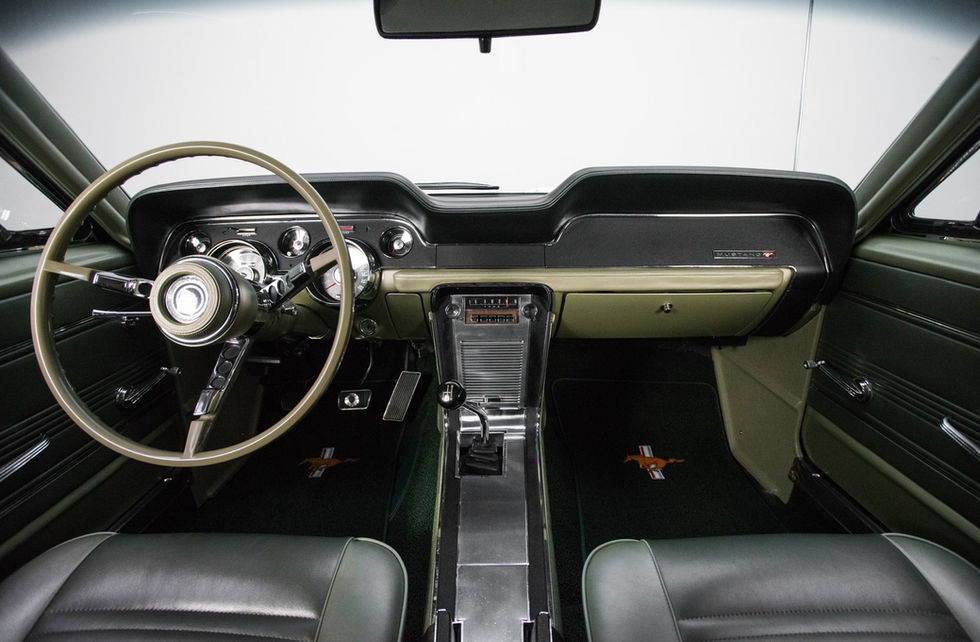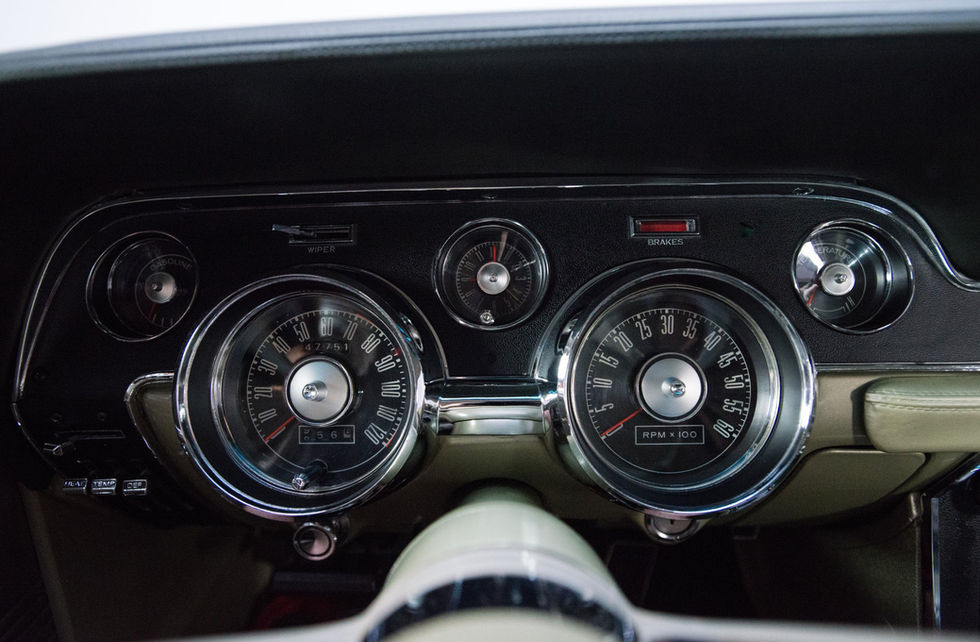1967 Ford Mustang
Images by RK Motors Charlotte - The best place for sales, service and consignment
In 1967, Lee gave Iacocca's once petite Mustang a significant growth spurt. The Mustang grew 2 inches in length, over 2.5 inches in width, and half an inch in height. Although the wheelbase remained unchanged at 108 inches, the tracks widened from 55.4 to 58 inches at the front and from 56 to 58 inches at the rear.
This growth also brought with it a weight gain of 130 pounds. Despite new design elements such as the concave taillights and the two air inlets on the hood, the classic Mustang feeling was retained. The top model was again the GT. Hot Rod editor Eric Dahlquist expressed his enthusiasm: "The auto industry has squandered many a design over the last two decades. When Ford redesigned the Mustang, everyone held their breath. But everything is as it should be."
The long hood accommodated the 390 cid FE big block, requiring adjustments to the shock suspension. With a quadruple carburettor, the 390 GT V8 developed an impressive 320 hp. The 1967 Mustang GTs were available with both the 390 cid big block and the 289 small block.
To optimize driving dynamics and make room for more powerful engines, the front suspension was revised and expanded. The 1967 Mustang was essentially characterized by its increased engine power and more robust construction. This was crucial to securing Ford's leadership position in the pony car segment.
New transmission options for the Mustang GT were introduced, with models equipped with Cruise-O-Matic identified by a red "A" in addition to the GT badge. Manual models bore the "GT" label, automatic variants were referred to as "GTA". However, this distinction was abolished in 1968.
In 1967, Ford also introduced new features such as a nine-position adjustable steering wheel. When the driver's door was opened, it automatically swung into a comfortable position.
Under the hood of this legendary vehicle were various engine options that underlined the versatility of the 1967 Mustang. For those seeking balanced performance, the economical and reliable 200-cubic-inch (3.3L) Thriftpower six-cylinder was available. The Mustang's sportiness was highlighted by the 289-cubic-inch (4.7L) twin-barrel V8, while the quad-carbureted V8 offered increased performance for those seeking the ultimate driving experience. For even more impressive performance, the powerful 390-cubic-inch (6.4L) V8 was available, particularly popular in the GT models.
brochure























